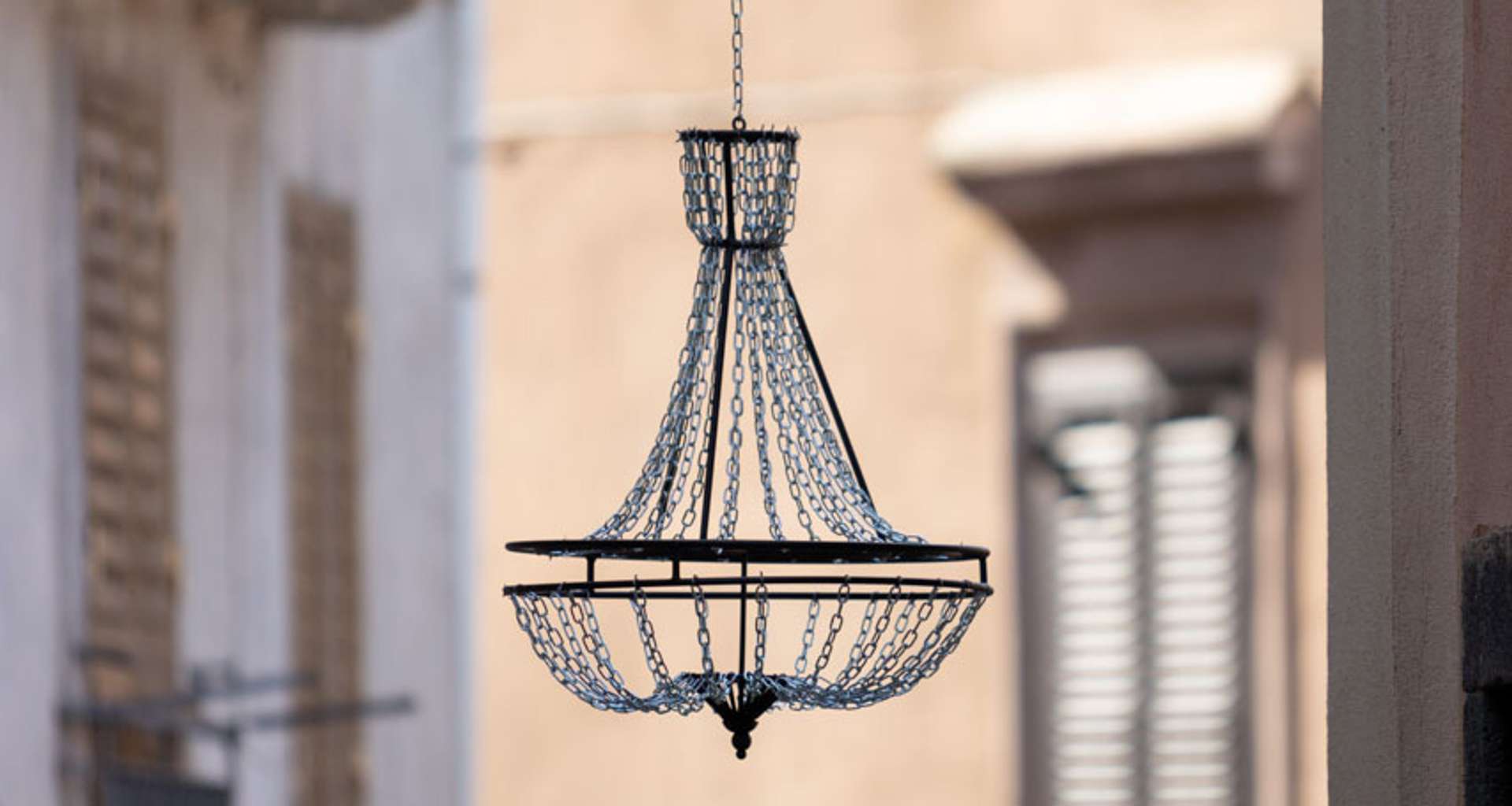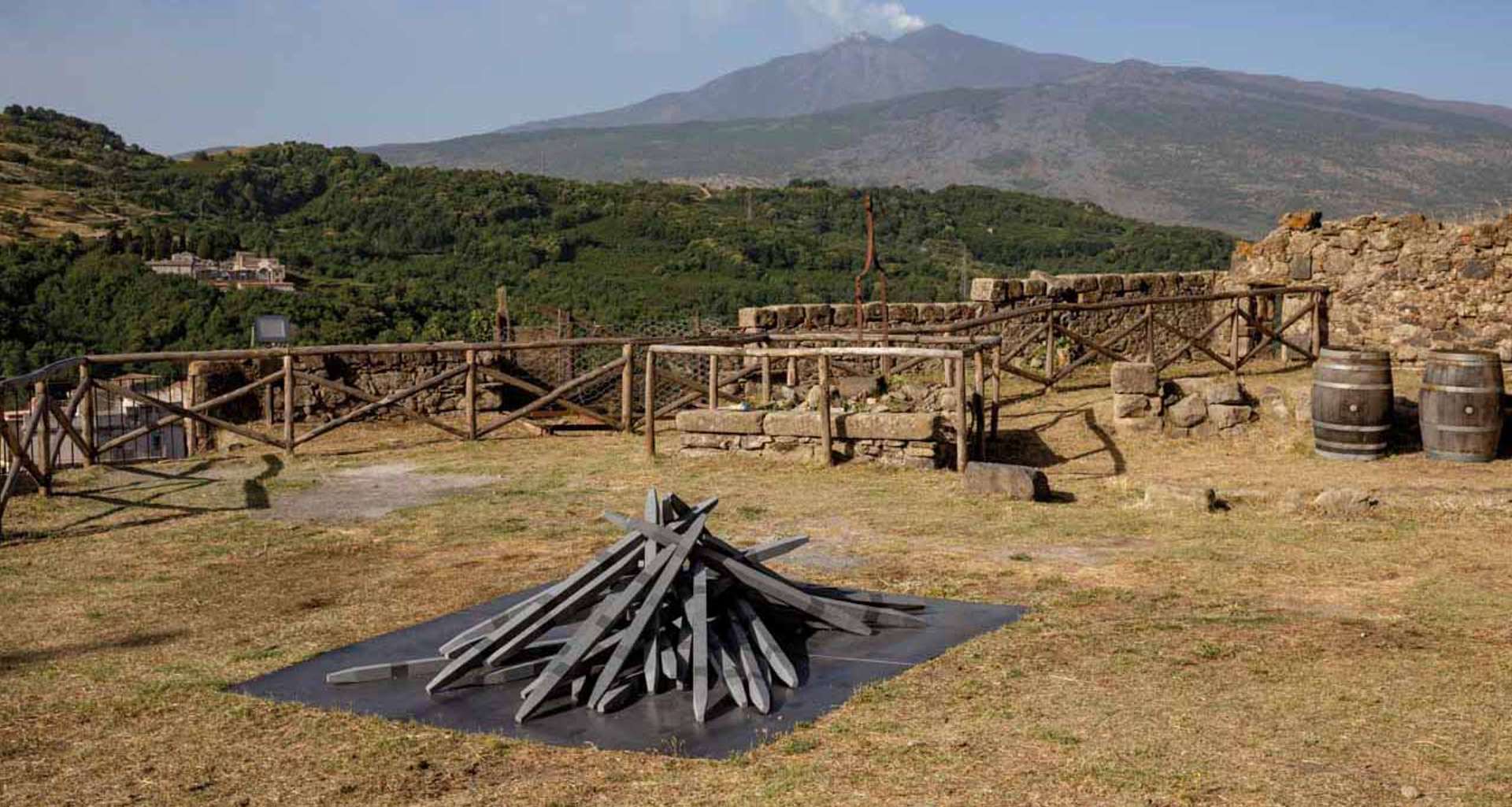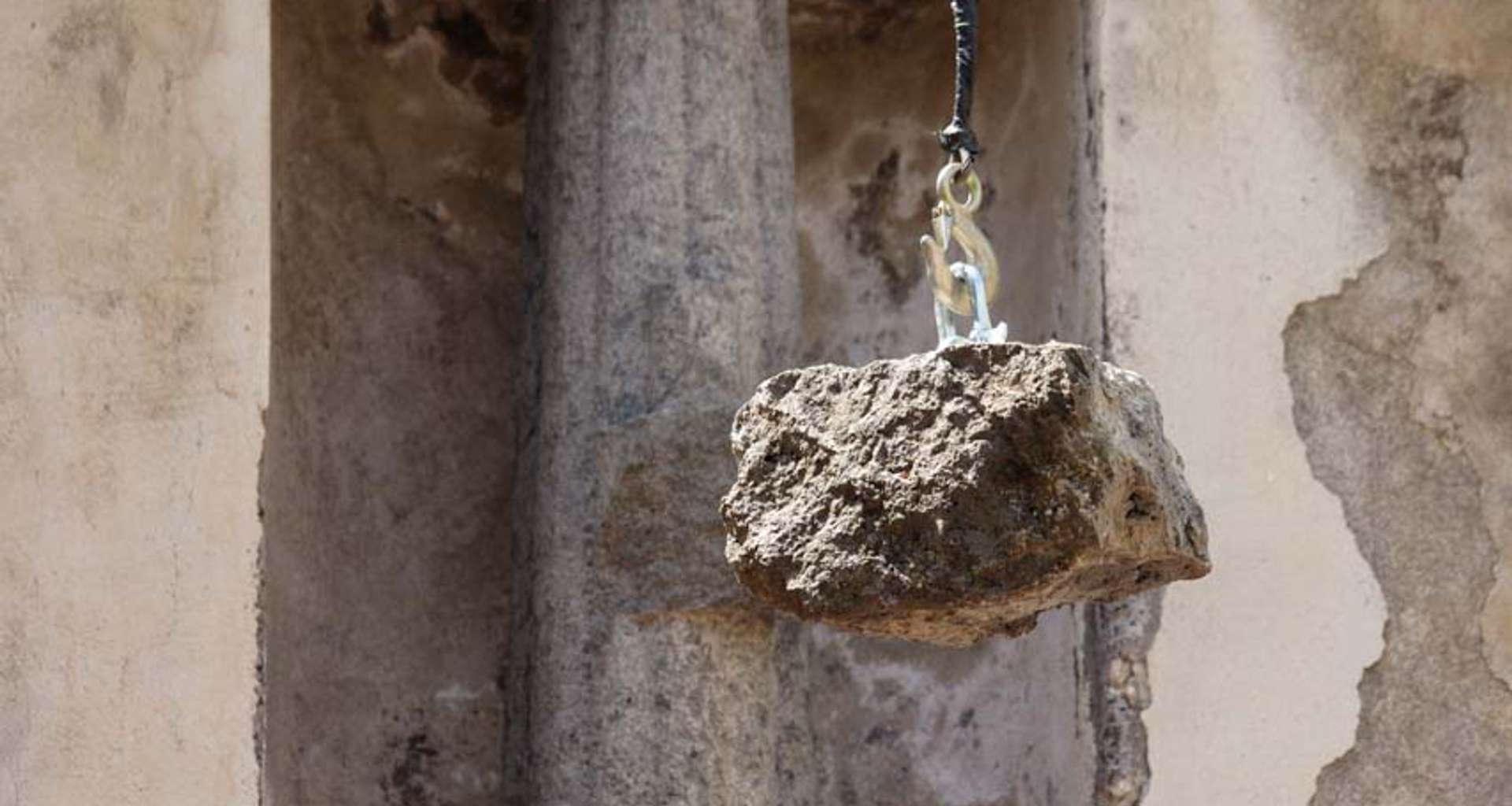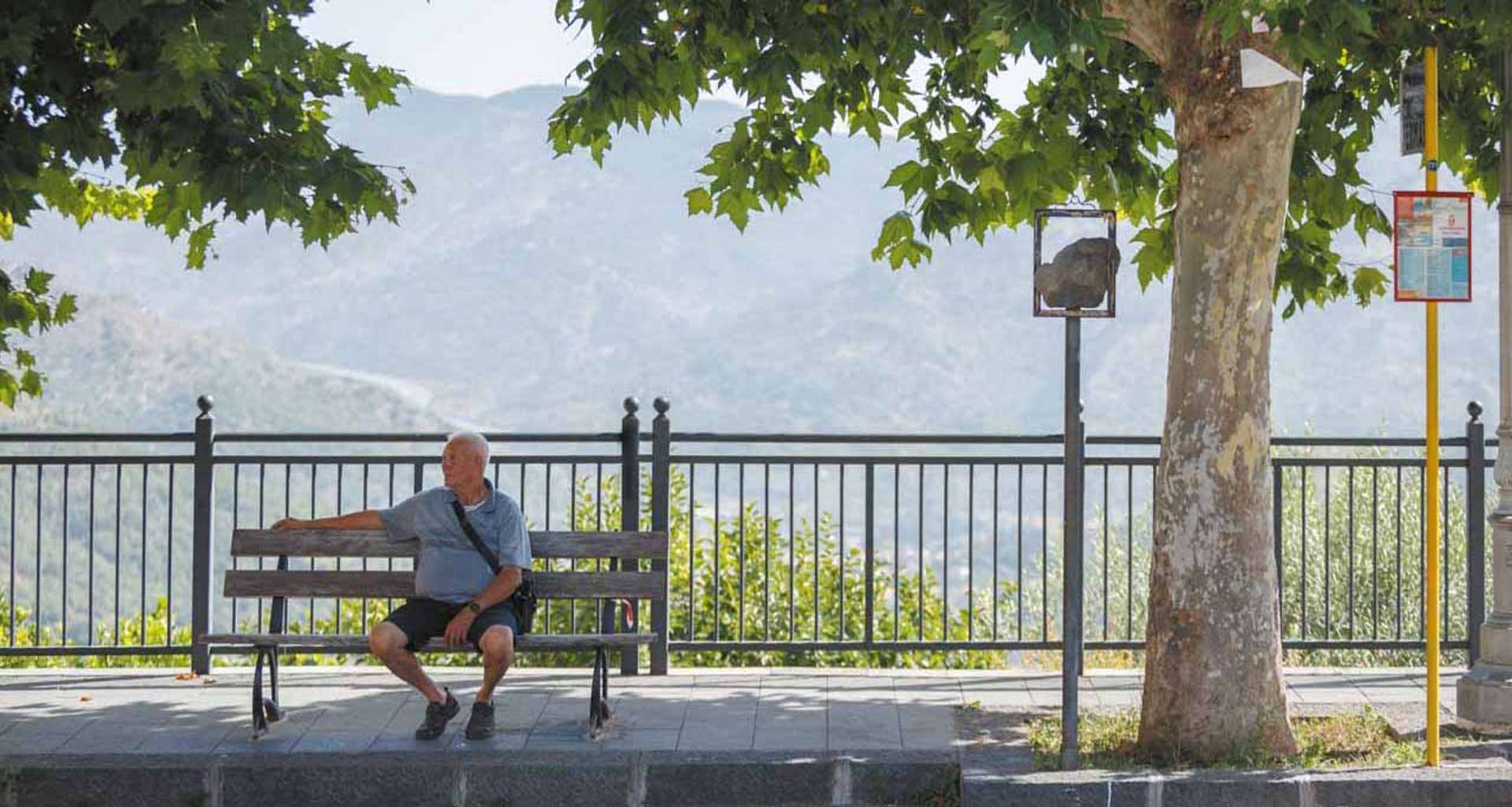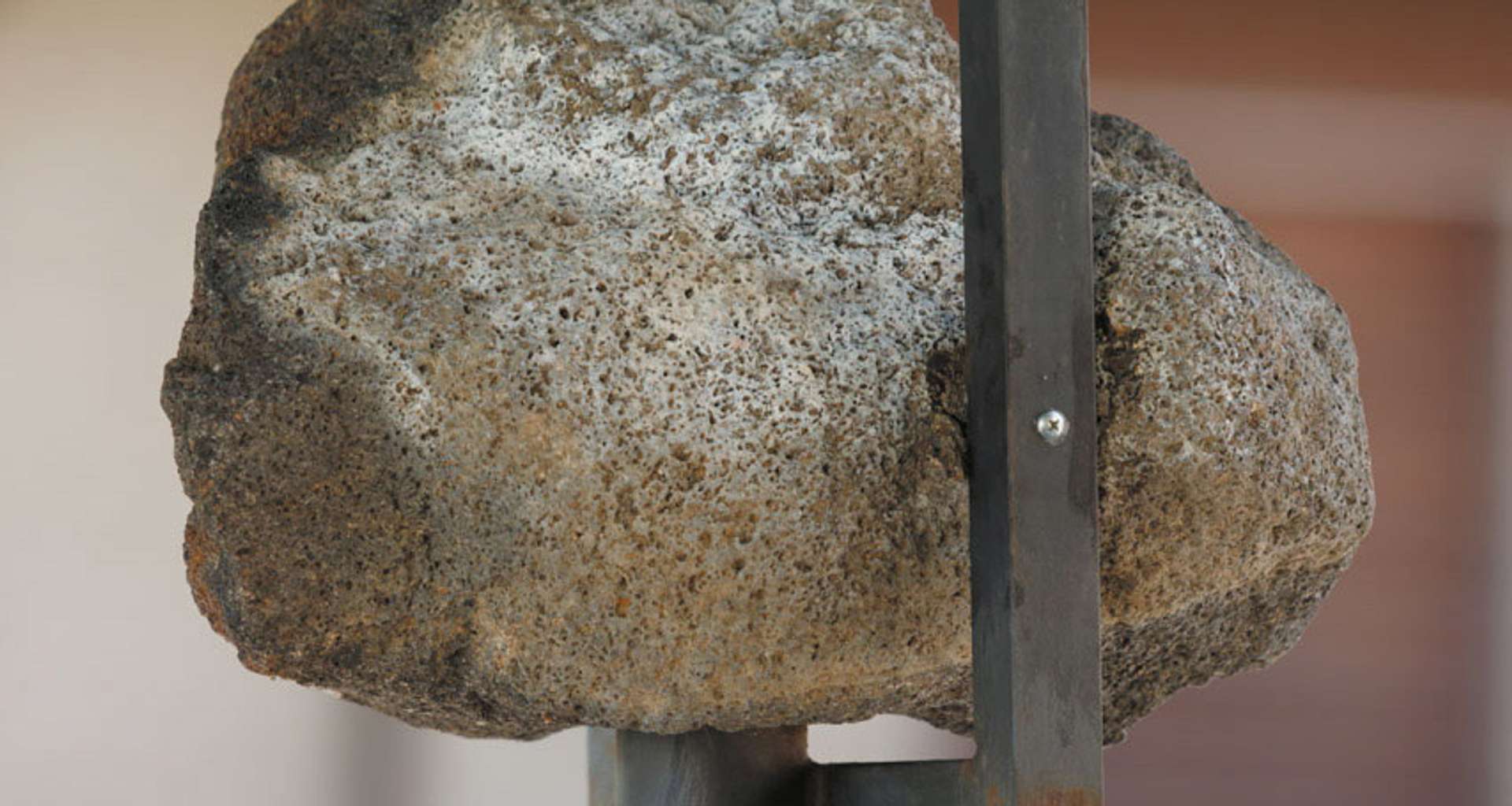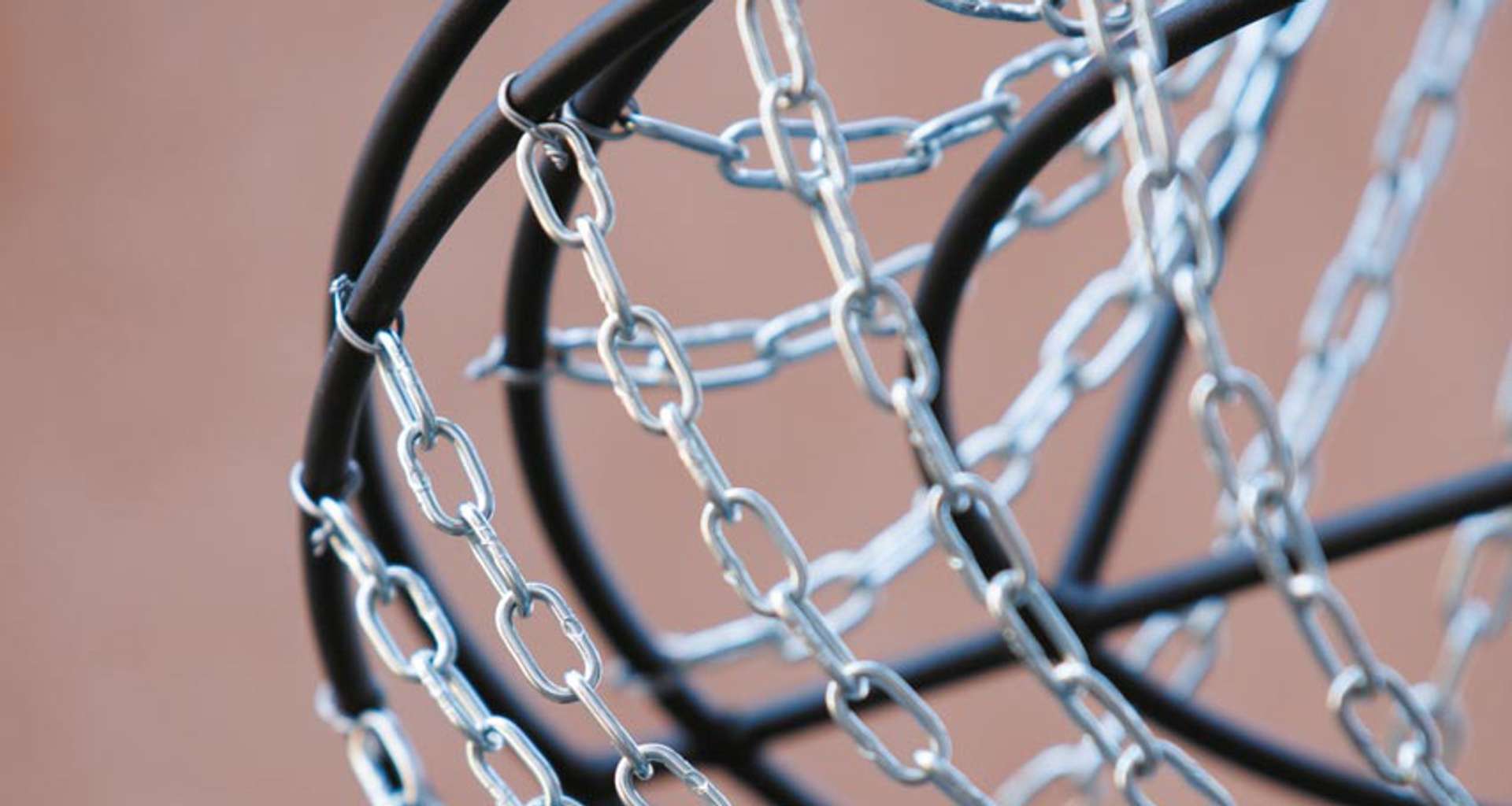Post-Mythical Accidents is a widespread public work by Berlin-based artist Isaac Chong Wai who investigates the layered complexity inscribed in the landscape of eastern Sicily. Intertwining reality, myth, religion and magic, Chong’s intervention unfolds in a series of installations scattered around the village of Castiglione di Sicilia.
Observing the wonder and constant fear of living at the foot of Mount Etna – source of life and constant threat of uncertain benevolence at the same time – the artist reflects on how the uncontrollable force of nature shapes a sense of immanence in human thought and behavior. Taking refuge in myth, faith or superstition, we try to scoff at fate and explore the mystery of nature. By forcing the unexplainable into the creation of myths and narratives, human beings pigeonhole what they cannot foresee within an anthropocentric vision.
The installations Accidental Confessional and Lightless Chandelier investigate the persistence of myth and religion, intertwining traces of Homer with the Christian tradition.
Accidental Lava Stone got stuck in a Bus Stop and Accidental Lava Stone hits a Facist Ornament connect with the Mediterranean legend of Ulysses and Polyphemus and the myth of the Faraglioni from Acitrezza, interacting with the surrounding area and recent history.
Shangai (2022), well-known as Mikado game in Italy, represents the scene in which mystification, exoticism and different cultures alternate without rules, depending on an order set by the real and the unreal, history and myth, religion and the primitive instinct of survival.
In this context, the “post-mythical” represents a hybrid area where the rules of reality are suspended and a new order is established by narrative, fiction, fantasy and magic.
NATURE, RELIGIONS, MYTHS AND BELIEFS CAN NEVER BE EXPLAINED WITHOUT THE DESIRES AND NEEDS OF MAN. IF I DELVE INTO THE HISTORY OF CASTIGLIONE DI SICILIA, I SEE THE TRACE OF RELIGION AND MYTHOLOGY. THE COUNTRY’S CULTURE, HISTORY AND RELIGION INTERSECT WITH ITS GEOGRAPHICAL LOCATION AT THE FOOT OF MOUNT ETNA, A LIVING VOLCANO THAT THREATENS POTENTIAL DISASTERS AND ACCIDENTS. ON THE BASIS OF LOCAL MYTHS, FOR EACH WORK OF ART I HAVE CREATED POST-MYTHS THAT CONNECT RELIGIOUS OR ARCHITECTURAL OBJECTS, DESIGNED TO SATISFY PEOPLE’S SPIRITUAL, PHYSICAL AND POLITICAL DESIRES, WITH THE STORIES OF THE MYTHOLOGICAL CHARACTERS OF ETNA SUCH AS VULCAN, CYCLOPS, TYPHON, ODYSSEUS AND ZEUS
Isaac Chong Wai (Guangdong, 1990) is an artist working between Berlin and Hong Kong. He works across a range of media, comprising performance, sculpture, video, painting and photography. His practice unfolds the struggle of powerlessness, precariousness and structural violence in the social and political spheres and engages with transnational collective memory and woundedness. Influenced by personal and international phenomena, he deals with topics of collectivism and individualism, geopolitics, identity politics, LGBTQ, power relations and decentralization, social movements and commemoration in public space.
His solo exhibitions include Bilsart, Istanbul (2021); Blindspot Gallery, Hong Kong (2019); Zilberman, Berlin (2019); Kunstraum München, Munich (2018); Goethe Institut, Hong Kong (2018); Bauhaus Museum, Weimar (2016). His work has been shown at Kunstraum Kreuzberg/ Bethanien, Berlin (2021); National Museum of Modern and Contemporary Art, Seoul, Innsbruck Biennial and IFFR, Rotterdam (2020); Museum of Contemporary Art, Taipei and Guangdong Times Museum, Guangzhou (2019); M+ Museum and Para Site, Hong Kong and Times Art Center Berlin (2018); among the others.
Chong was awarded Fellowship at Kulturakademie Tarabya and Talent Award at Jutta Cuny-Franz Memorial Award, Kunstpalast Museum in 2020, and Warsteiner Blooom Award in 2019. He is one of the participating artists at Urban Heat from 2015 to 2018. He was awarded Burger Collection “Artist Scholarship Program” in 2016, and Bauhaus Essentials Award in 2015 and 2014.
WHEN OUR SUPPOSED WORLD OF REALITY IS EXPLAINED THROUGH MYTHS WHOSE CHARACTER CONTAINS SOMETHING IRRATIONAL, IT IS AS IF AN ACCIDENT IS GENERATED. REFLECTING ON THE CREATION OF MYTHS AND THE POWER OF NARRATIVES INTEGRATED INTO A RELIGIOUS, CULTURAL OR POLITICAL CONTEXT, I AM INTERESTED IN UNDERLINING THE ABSURDITY OF AN ANTHROPOCENTRIC APPROACH, COMMITTED TO THE ATTEMPT TO CONTROL NATURE AND THE IMMANENCE THAT INSTEAD DISTINGUISHES THE INDOMITABLE ESSENCE OF NATURE ITSELF
Stretching out over 120 sq km, Castiglione di Sicilia is one of the largest municipalities in the province of Catania. It has a population of about 3,000 inhabitants, divided between the historical centre itself and the various hamlets Gravà, Mitogio, Passopisciaro, Solicchiata, Rovittello, Verzella. The area straddles two regional parks, Etna and Alcantara. Since prehistoric times, it has been located on a ridge of sandstone rock and the site where Castiglione currently stands has always been a strategic control point for the Alcantara Valley. The ancient medieval city was characterised by its surrounding wall that had nine access gates: del Re, Speziale, Castello, Pagana, Giudecca, Portello, Bucceria, San Pietro, San Martino – burgum or porta Priolo, while the smaller villages remained outside the wall. What remains of the ancient urban fabric is the classic medieval centre with radial alleys that eventually climb up to the top of the village where the tall and majestic Castle of Ruggero di Lauria looks out over the surrounding area. The more recently built part of town overlaps with the actual historic centre in an alternation of more modern streets and squares. Passing through the historic centre, many old noble palaces are noticeable. Here, as well as in the churches, you can clearly see the alternation of architectural and construction elements in igneous stone and sandstone. The area is world famous for the production of Etna Doc wines. The town is part of the initiative Borghi più Belli d’Italia.
